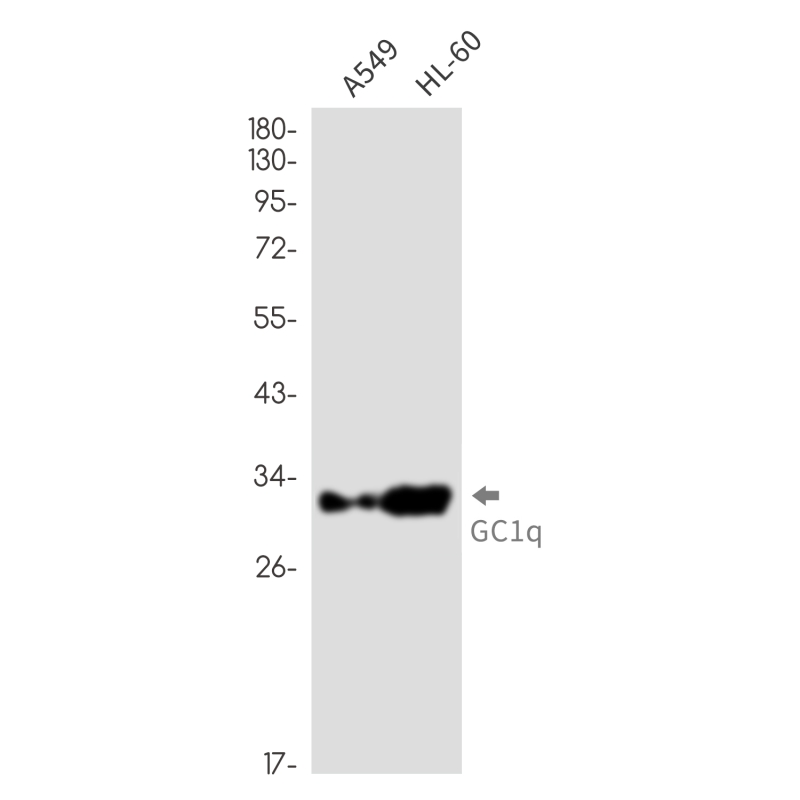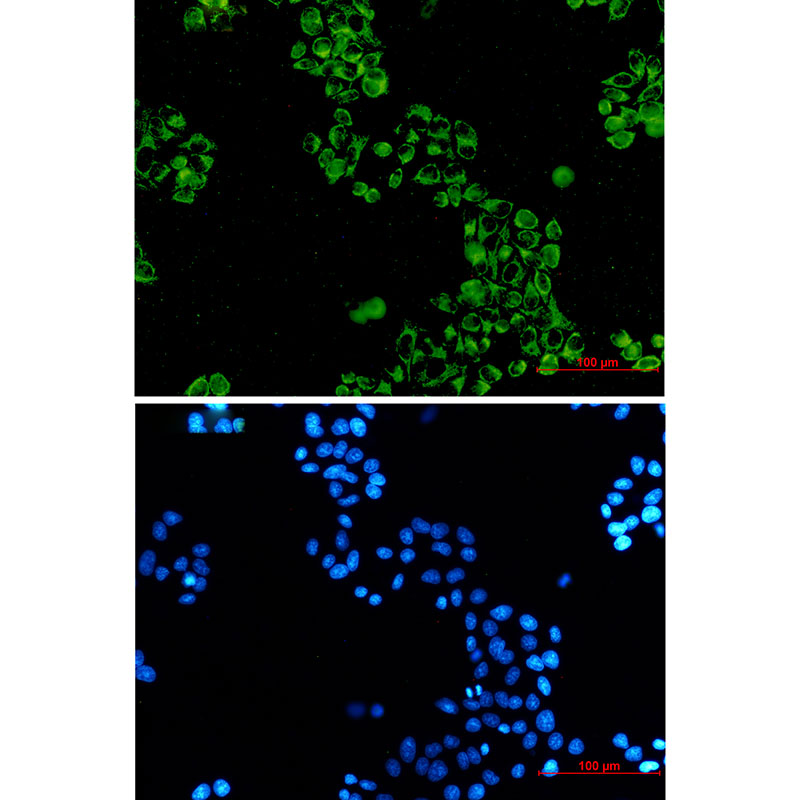

| WB | 1/500-1/1000 | Human,Mouse,Rat |
| IF | 咨询技术 | Human,Mouse,Rat |
| IHC | 咨询技术 | Human,Mouse,Rat |
| ICC | 1/50-1/200 | Human,Mouse,Rat |
| FCM | 咨询技术 | Human,Mouse,Rat |
| Elisa | 咨询技术 | Human,Mouse,Rat |
| Aliases | C1QBP; GC1QBP; HABP1; SF2P32; Complement component 1 Q subcomponent-binding protein; mitochondrial; GC1q-R protein; Glycoprotein gC1qBP; C1qBP; Hyaluronan-binding protein 1; Mitochondrial matrix protein p32; p33 |
| Entrez GeneID | 708 |
| WB Predicted band size | Calculated MW: 31 kDa; Observed MW: 31 kDa |
| Host/Isotype | Rabbit IgG |
| Antibody Type | Primary antibody |
| Storage | Store at 4°C short term. Aliquot and store at -20°C long term. Avoid freeze/thaw cycles. |
| Species Reactivity | Human |
| Immunogen | Recombinant protein of human GC1q R |
| Formulation | Purified antibody in TBS with 0.05% sodium azide,0.05%BSA and 50% glycerol. |
+ +
以下是关于gC1qR抗体的3篇代表性文献(信息基于公开研究总结,建议核实原文):
---
1. **文献名称**: *"The role of gC1qR in autoimmune diseases: Focus on anti-gC1qR autoantibodies"*
**作者**: Ghebrehiwet, B., et al.
**摘要**: 探讨gC1qR在系统性红斑狼疮(SLE)等自身免疫病中的作用,发现患者血清中抗gC1qR抗体水平升高,可能通过激活补体系统加剧炎症反应。
---
2. **文献名称**: *"Anti-gC1qR antibodies in antiphospholipid syndrome: A novel biomarker for thrombosis?"*
**作者**: Agostinis, C., et al.
**摘要**: 研究抗磷脂综合征(APS)患者中抗gC1qR抗体的存在,提示其与血栓形成风险相关,可能通过干扰内皮细胞功能促进病理过程。
---
3. **文献名称**: *"gC1qR as a target for viral immune evasion and its implications in antibody-mediated pathogenesis"*
**作者**: van den Elsen, J.M.H., et al.
**摘要**: 分析gC1qR在病毒感染(如HIV)中作为宿主蛋白的作用,发现抗gC1qR抗体可能参与病毒逃避免疫监视的机制,并与慢性炎症状态相关。
---
如需具体文献来源,可检索PubMed或SciHub,使用关键词“gC1qR antibody”或“gC1q receptor autoantibodies”。
The gC1q receptor (gC1qR), also known as the complement component C1q-binding protein or p33. is a multifunctional cellular protein encoded by the *C1QBP* gene. Initially identified as a receptor for the globular heads of C1q, a key component of the classical complement pathway, gC1qR plays a role in innate immunity by mediating complement activation and immune complex clearance. It is ubiquitously expressed, localized to mitochondria, the cell surface, and nucleus, and interacts with diverse ligands, including viral proteins, coagulation factors, and immunoglobulins, linking it to inflammation, infection, and autoimmunity.
Anti-gC1qR antibodies are autoantibodies detected in autoimmune conditions like systemic lupus erythematosus (SLE), lupus nephritis, and anti-phospholipid syndrome. These antibodies are thought to contribute to pathogenesis by disrupting complement regulation, promoting endothelial cell activation, or forming immune complexes that deposit in tissues, triggering inflammation and organ damage. In SLE, anti-gC1qR antibodies correlate with disease severity, particularly renal involvement, suggesting a potential biomarker role.
Beyond autoimmunity, gC1qR is implicated in viral entry (e.g., HIV-1. hepatitis C) and cancer progression, making its study relevant for therapeutic targeting. Research on gC1qR antibodies focuses on elucidating their pathogenic mechanisms, diagnostic utility, and therapeutic modulation to restore immune homeostasis.
×